Are Green Energy Solutions Reliable?
In today's world, where climate change and environmental degradation are hot topics, the question of reliability in green energy solutions becomes increasingly important. Are these renewable sources truly dependable, or are they just a fleeting trend in the energy market? To answer this, we must look beyond the surface and delve into the intricate dynamics of renewable energy sources such as solar, wind, and hydroelectric power. The truth is, while these solutions present some challenges, they also offer a plethora of benefits that make them a reliable choice for a sustainable future.
First and foremost, let's acknowledge the **core principle** of green energy: it aims to harness natural resources without depleting them. This means that as long as the sun shines and the wind blows, we have the potential for a continuous supply of energy. However, one of the main criticisms of green energy is its intermittency. For instance, solar power generation drops at night, and wind energy can be unpredictable. But does that mean we should dismiss these options? Absolutely not! Innovations in technology, such as energy storage solutions and smart grid systems, are paving the way to overcome these challenges, enhancing the reliability of green energy sources.
Moreover, the economic implications of adopting green energy solutions cannot be ignored. By investing in renewable energy, countries can reduce their dependency on fossil fuels, which are not only finite but also subject to volatile market fluctuations. This shift not only promotes energy independence but also contributes to job creation in emerging sectors. Imagine a world where local economies thrive on renewable energy jobs, from manufacturing to installation. This is not just a dream; it's happening right now!
In terms of cost, while the initial investment in green technologies may seem daunting, the long-term savings are substantial. Renewable energy can drastically lower electricity bills and operational costs for businesses. As more people transition to these sustainable options, the economies of scale will further drive down prices, making green energy accessible to everyone. So, when we weigh the initial costs against the long-term benefits, the scales tip in favor of renewable energy solutions.
As we look to the future, it's essential to recognize the trends shaping the green energy landscape. With global investments pouring into renewable technologies and supportive policies emerging worldwide, the reliability of green energy solutions is set to improve significantly. From advancements in energy storage to the implementation of smart grid technology, the future is bright for green energy enthusiasts. In the end, the question is not whether green energy solutions are reliable, but rather how quickly we can adapt and optimize them for a sustainable future.
- What are the main types of green energy? Green energy primarily includes solar, wind, hydroelectric, geothermal, and biomass energy.
- How do energy storage solutions improve reliability? Energy storage systems, like batteries, store excess energy generated during peak production times for use during low production periods, thus balancing supply and demand.
- Are green energy solutions cost-effective? Yes, while initial investments can be high, the long-term savings on energy bills and operational costs make green energy a financially viable option.
- What role does technology play in green energy? Technological advancements enhance the efficiency, reliability, and accessibility of green energy solutions, making them more competitive with traditional energy sources.
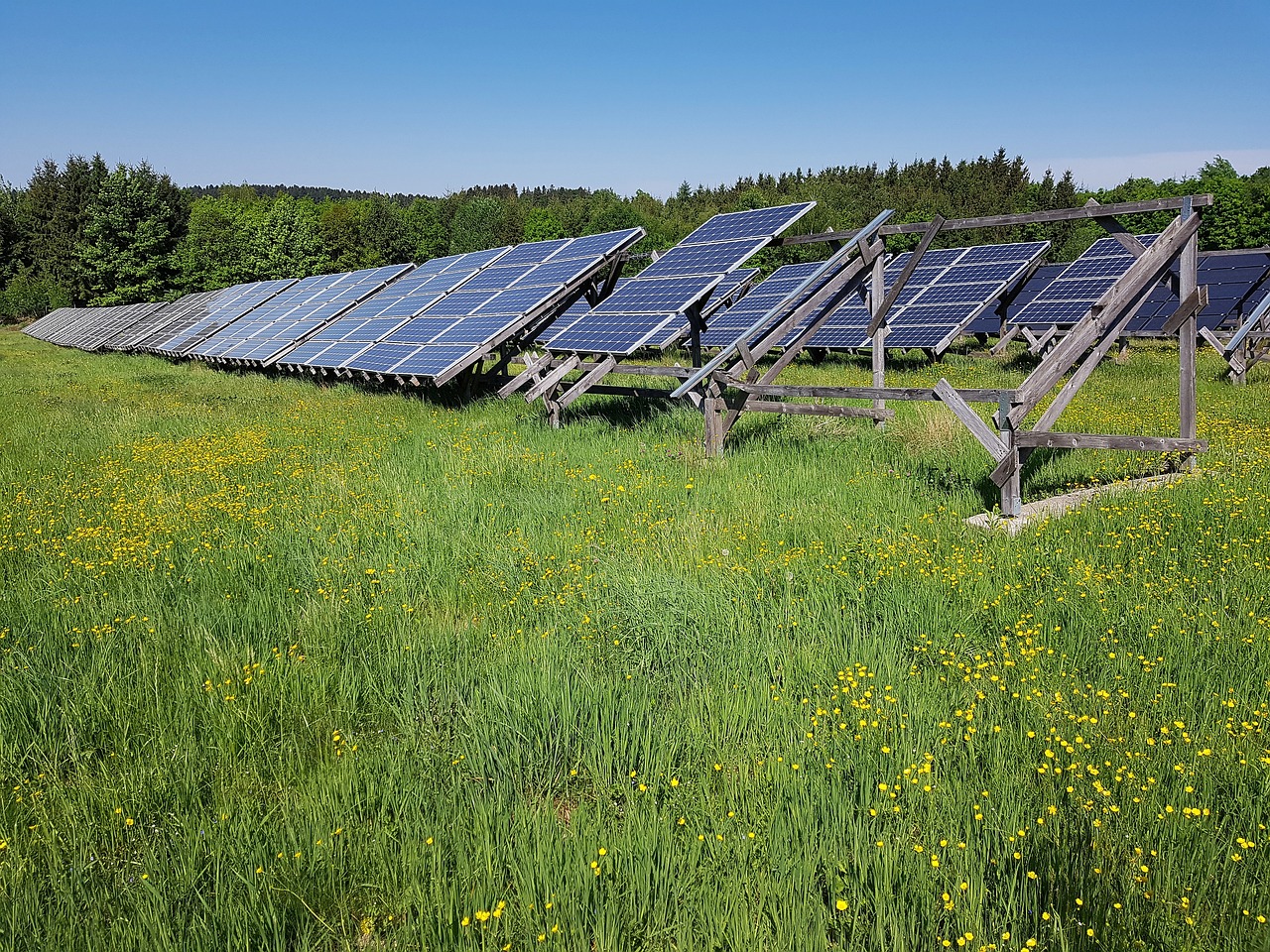
Understanding Green Energy
Green energy is more than just a buzzword; it's a vital part of our quest for a sustainable future. When we talk about green energy, we’re referring to energy that comes from natural sources that replenish themselves. This includes solar, wind, hydro, and geothermal energy. These sources are essential in our fight against climate change, as they produce little to no greenhouse gas emissions compared to traditional fossil fuels. Imagine harnessing the power of the sun or the wind instead of relying on finite resources that pollute our planet. It's like switching from a clunky old car to a sleek, eco-friendly electric vehicle—both are modes of transportation, but one is far better for the environment.
The importance of green energy cannot be overstated. As global temperatures rise and extreme weather events become more frequent, transitioning to renewable energy sources is not just wise; it’s imperative. Green energy solutions offer a way to mitigate the effects of climate change while also providing energy security. By diversifying our energy sources, we reduce our dependency on fossil fuels, which are subject to price fluctuations and geopolitical tensions. Think of it as building a safety net for your finances; the more diverse your investments, the less risk you face. This diversification is crucial for both economic stability and environmental health.
Moreover, green energy is not just about saving the planet; it's also about creating a sustainable economic model. The renewable energy sector is rapidly growing, and with it comes the potential for new jobs and industries. For instance, the installation of solar panels or wind turbines requires skilled labor, leading to an increase in employment opportunities. So, while we’re saving the Earth, we’re also boosting our economy. It’s a win-win situation that many people are starting to recognize and embrace.
However, understanding green energy also means acknowledging its complexities. While the benefits are clear, the transition to a green energy landscape isn’t without its challenges. For example, renewable energy sources can be intermittent—solar energy is only available when the sun is shining, and wind energy relies on, well, the wind! This intermittency can create reliability issues, which is why advancements in technology and energy storage solutions are crucial. Just like a good recipe requires the right ingredients at the right time, a successful green energy strategy needs a combination of reliable sources, innovative technology, and smart policy-making.
In conclusion, green energy is a multifaceted concept that plays a crucial role in our fight against climate change. It offers a pathway to a more sustainable future, providing economic benefits while reducing our carbon footprint. As we continue to innovate and adapt, the potential for green energy solutions to transform our energy landscape becomes even more promising. So, are you ready to embrace this green revolution?
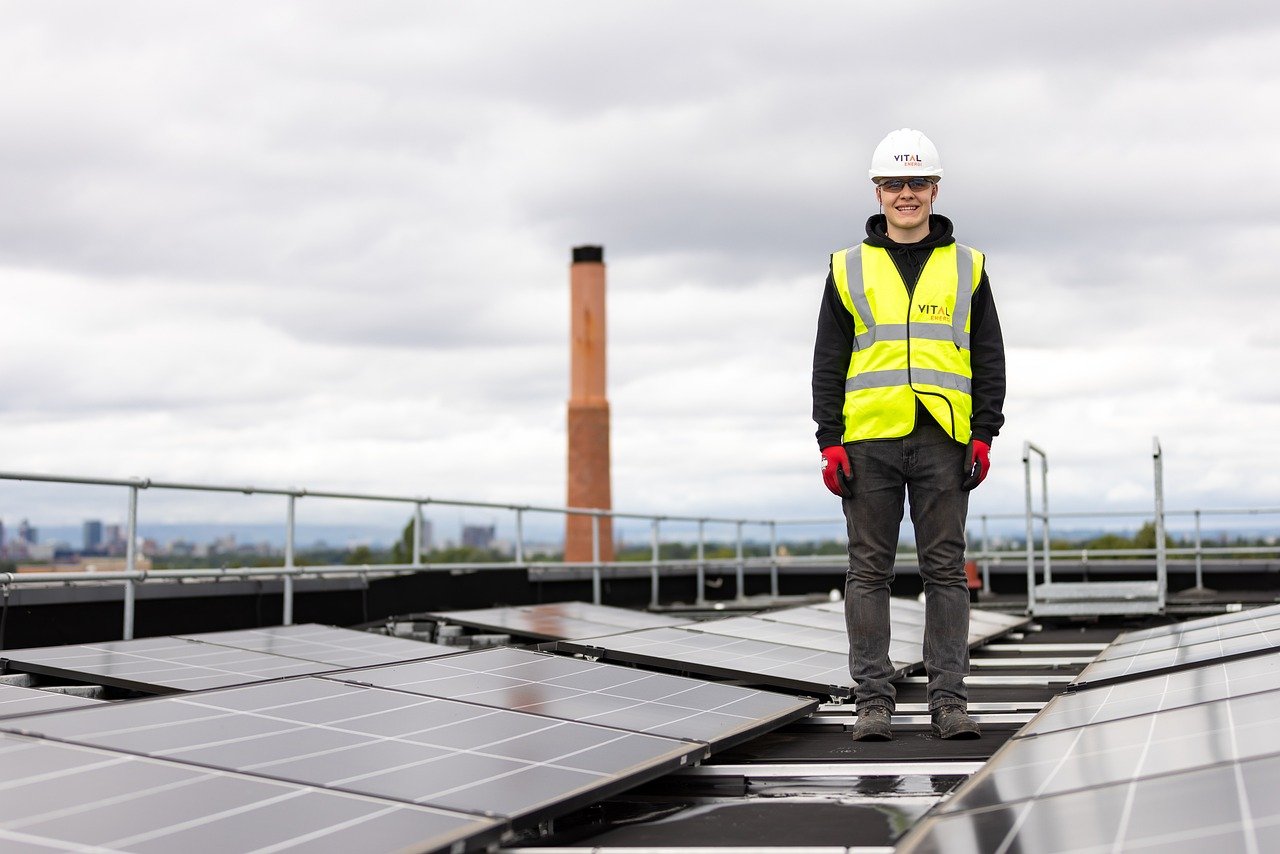
Benefits of Green Energy Solutions
When we talk about green energy solutions, we're diving into a treasure trove of benefits that can transform our world. Imagine a landscape where the air is cleaner, the energy is abundant, and the economy is thriving—all thanks to renewable energy sources like solar, wind, and hydro. These green energy solutions not only reduce our carbon footprint but also pave the way for a sustainable future. But what exactly are these benefits? Let’s explore!
First and foremost, one of the most significant advantages of green energy is the reduction of greenhouse gas emissions. Unlike fossil fuels, which release harmful pollutants into the atmosphere, renewable energy sources produce little to no emissions during operation. This shift is crucial in combating climate change and improving air quality. For instance, according to a recent study, transitioning to renewable energy could reduce global CO2 emissions by as much as 70% by 2050. Isn't that a staggering figure?
Another compelling benefit is the potential for lower energy costs. While the initial investment in renewable technologies can seem daunting, the long-term savings are undeniable. Once solar panels are installed or a wind turbine is operational, the ongoing costs are minimal compared to traditional energy sources. In fact, homeowners who invest in solar energy can save thousands on their electricity bills over time. To illustrate, consider the following table that compares the average costs of renewable energy versus fossil fuels:
| Energy Source | Average Cost per kWh |
|---|---|
| Solar Energy | $0.06 |
| Wind Energy | $0.01 |
| Natural Gas | $0.03 |
| Coal | $0.05 |
As we can see, renewable energy sources often provide a more cost-effective solution in the long run. But it doesn’t stop there! Green energy solutions also contribute to energy independence. By harnessing local renewable resources, countries can reduce their reliance on imported fossil fuels, which often come with fluctuating prices and geopolitical tensions. This independence not only boosts national security but also stabilizes energy prices for consumers.
Moreover, the transition to green energy can significantly impact local economies. As more businesses and households adopt renewable technologies, the demand for green jobs increases. This leads to an exciting cycle of job creation, where new opportunities emerge in manufacturing, installation, and maintenance of renewable energy systems. In fact, the renewable energy sector is one of the fastest-growing job markets globally, providing sustainable employment for millions. Think of it as planting seeds today that will grow into a lush forest of opportunities tomorrow!
In summary, the benefits of green energy solutions are manifold. From reducing greenhouse gas emissions and lowering energy costs to fostering energy independence and creating jobs, these solutions are not just a trend; they are a vital part of our future. So, are you ready to embrace this green revolution?
- What is green energy?
Green energy refers to renewable energy sources that are environmentally friendly, such as solar, wind, and hydroelectric power. - How does green energy reduce costs?
While the upfront investment can be high, renewable energy sources often have lower operational costs, leading to significant savings over time. - Can green energy provide enough power for entire cities?
Yes! With advancements in technology and energy storage solutions, green energy can indeed power entire cities sustainably.
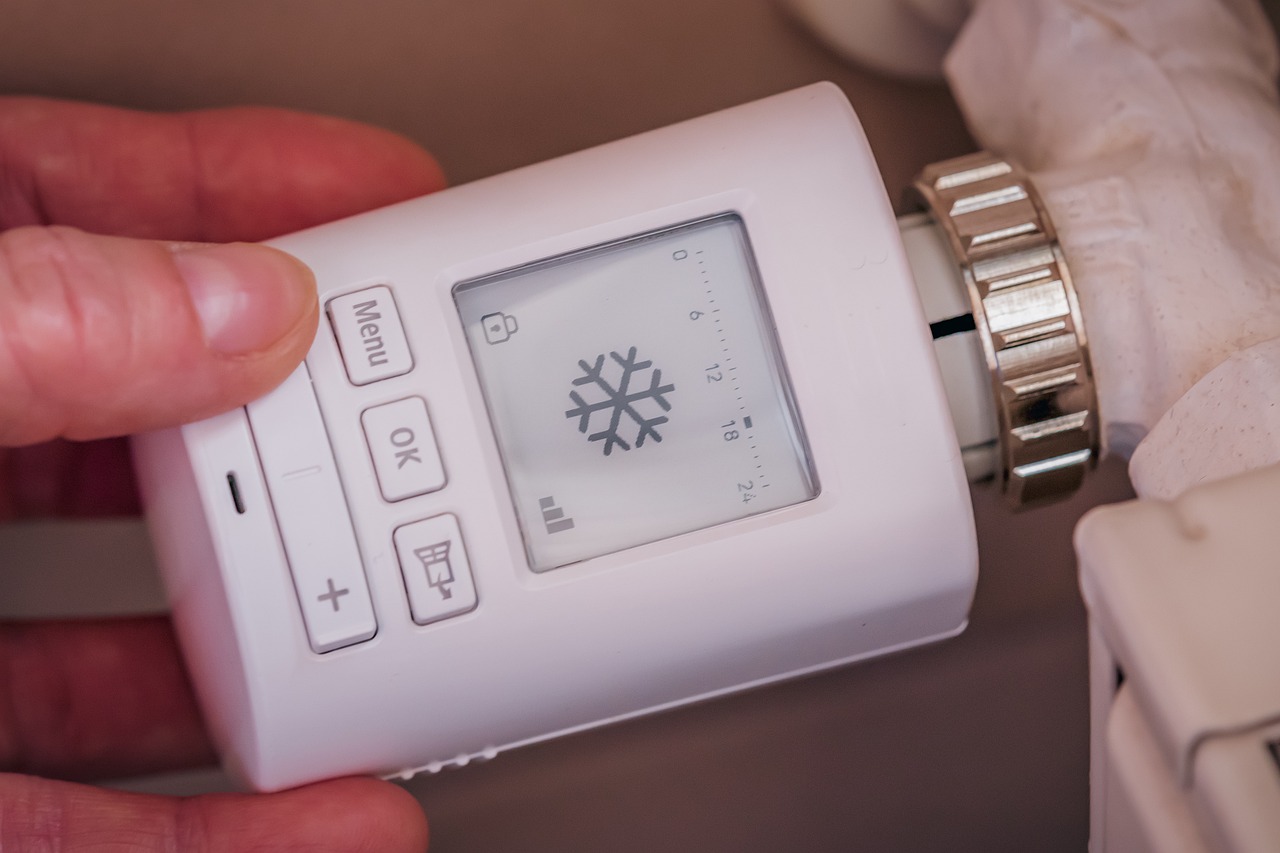
Economic Impact
The transition to green energy solutions is not just an environmental necessity; it is also a powerful economic driver. As countries around the world shift their focus towards renewable energy sources like solar, wind, and hydro, they are unlocking a treasure trove of economic benefits. One of the most significant impacts is the creation of jobs. The renewable energy sector has become a beacon of employment opportunities, with new jobs emerging in manufacturing, installation, and maintenance of green technologies. This shift not only provides immediate job opportunities but also stimulates local economies, creating a ripple effect that benefits various industries.
Consider this: when a community invests in a solar farm or a wind turbine project, it doesn't just create jobs for engineers and technicians. It also boosts local businesses—think of the hardware stores supplying materials, the restaurants catering to workers, and the hotels accommodating visiting contractors. The economic impact is profound and multifaceted. According to recent studies, the renewable energy sector has the potential to create millions of jobs globally within the next decade, significantly reducing unemployment rates in regions heavily reliant on fossil fuels.
Moreover, green energy solutions can lead to substantial cost savings for both consumers and businesses. By investing in renewable energy sources, households can lower their electricity bills, while companies can reduce their operational costs. For instance, the initial investment in solar panels might be daunting, but over time, the savings on energy bills can be impressive. A study by the International Renewable Energy Agency (IRENA) indicates that the cost of solar energy has dropped by more than 80% in the last decade, making it increasingly accessible for everyone.
| Benefit | Impact |
|---|---|
| Job Creation | Millions of new jobs in renewable sectors |
| Cost Savings | Lower electricity bills for consumers and businesses |
| Local Economic Growth | Boosts local businesses and services |
In addition to job creation and cost savings, green energy solutions promote energy independence. Countries that invest in renewable energy can reduce their reliance on imported fossil fuels, which not only enhances national security but also stabilizes energy prices. By harnessing local resources, nations can create a more resilient energy infrastructure that is less susceptible to global market fluctuations.
In conclusion, the economic impact of green energy solutions is profound and far-reaching. From job creation to cost savings and energy independence, the benefits are clear. As we continue to innovate and invest in renewable technologies, we pave the way for a sustainable future that is not only environmentally friendly but also economically viable. The question is not whether we can afford to transition to green energy, but rather, can we afford not to?
- What are green energy solutions? Green energy solutions refer to renewable energy sources such as solar, wind, and hydro that are essential for reducing carbon footprints.
- How do green energy solutions create jobs? The transition to green energy leads to new job opportunities in manufacturing, installation, and maintenance of renewable energy technologies.
- Can green energy save money? Yes, investing in renewable energy can significantly lower electricity bills and reduce operational costs for businesses.
- Why is energy independence important? Energy independence reduces reliance on imported fossil fuels, enhancing national security and stabilizing energy prices.

Job Creation
The transition to green energy is not just an environmental necessity; it's also a remarkable opportunity for job creation across various sectors. As we shift from traditional fossil fuels to renewable energy sources such as solar, wind, and hydroelectric power, we are witnessing a surge in employment opportunities that are reshaping the workforce landscape. This change is akin to a breath of fresh air in a stagnant economy, invigorating communities and providing new avenues for skilled labor.
Consider the diverse range of jobs that the green energy sector encompasses. From manufacturing solar panels to installing wind turbines, the potential for employment growth is enormous. According to recent studies, the renewable energy sector has already created millions of jobs globally, and this number is expected to rise significantly in the coming years. For instance, the International Renewable Energy Agency (IRENA) reported that the renewable energy sector employed over 11 million people worldwide in 2018, and that number is projected to reach 24 million by 2030. This is not just a statistic; it represents real lives being positively impacted by the green energy revolution.
Additionally, the jobs created in this sector often come with a host of benefits that traditional fossil fuel jobs may lack. Many positions in the renewable energy field offer competitive wages, opportunities for advancement, and the satisfaction of contributing to a sustainable future. Moreover, these jobs are often more resilient to economic downturns, as the global push for sustainability continues to gain momentum. In fact, the demand for skilled workers in this field is so high that many companies are investing in training programs to equip the workforce with necessary skills.
To illustrate the impact of job creation in the green energy sector, consider the following breakdown of job types:
| Job Type | Description | Projected Growth |
|---|---|---|
| Solar Panel Installers | Professionals who install solar panels on residential and commercial buildings. | 20% by 2026 |
| Wind Turbine Technicians | Technicians responsible for the maintenance and repair of wind turbines. | 61% by 2026 |
| Energy Efficiency Specialists | Experts who help businesses and homeowners reduce energy consumption. | 15% by 2026 |
As we continue to embrace green energy solutions, it’s clear that the job creation potential is not merely a byproduct but a fundamental aspect of this transition. By investing in renewable energy, we are not just investing in cleaner air and a healthier planet; we are also investing in our workforce and the economy as a whole. So, the next time you hear about the shift to green energy, remember that it's not just about sustainability—it's also about creating jobs and fostering economic growth.
- What types of jobs are available in the green energy sector? The green energy sector offers a variety of jobs, including solar panel installers, wind turbine technicians, and energy efficiency specialists.
- Are jobs in renewable energy well-paying? Yes, many jobs in the renewable energy sector offer competitive wages and benefits, often exceeding those in traditional fossil fuel industries.
- How quickly is the green energy job market growing? The green energy job market is growing rapidly, with some positions projected to increase by over 60% in the next few years.
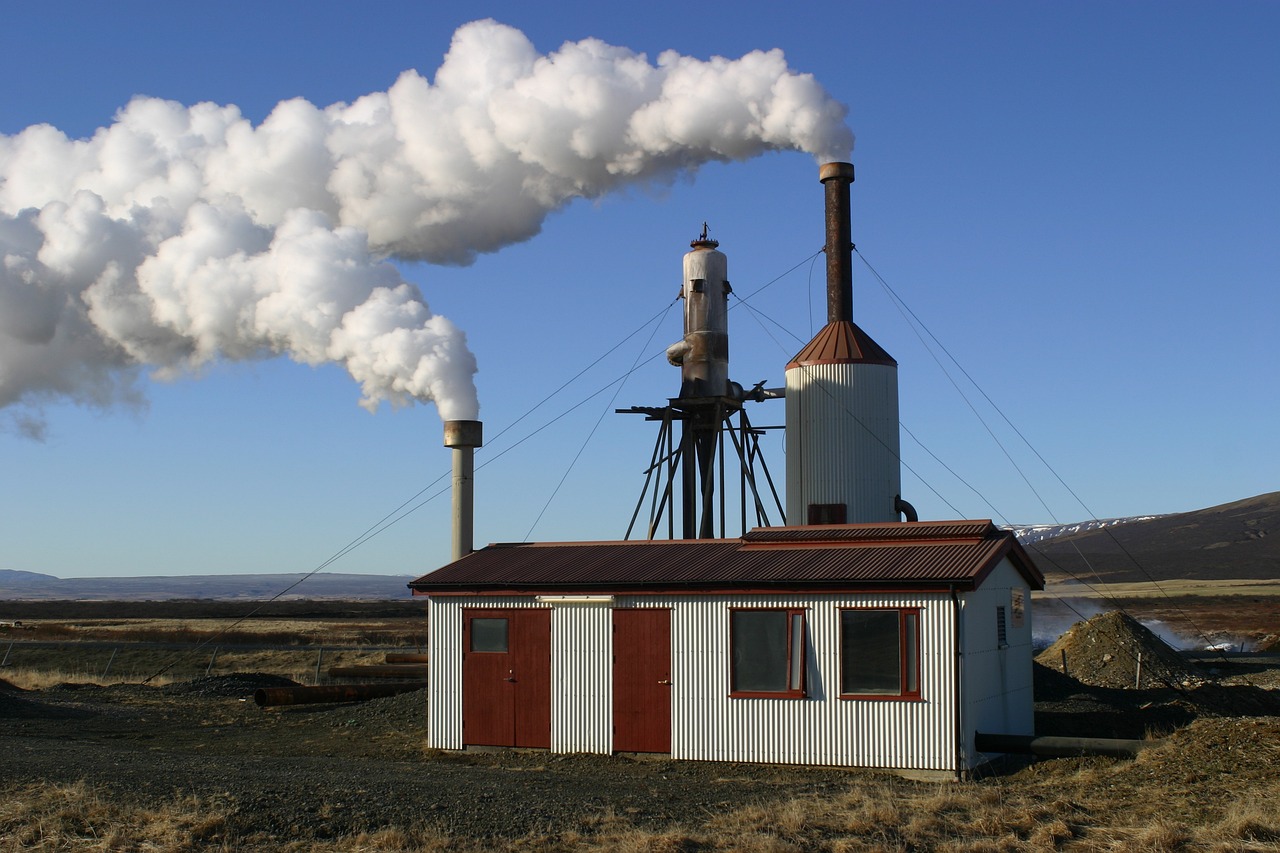
Cost Savings
When it comes to green energy solutions, one of the most compelling arguments in their favor is the potential for significant . Imagine slashing your energy bills while contributing to a healthier planet! By investing in renewable energy sources such as solar panels or wind turbines, both consumers and businesses can enjoy reduced electricity costs over time. The initial investment might seem daunting, but the long-term savings can be transformative.
For instance, homeowners who install solar panels can often see a reduction in their monthly energy bills by as much as 50% or more. This is not just a one-time benefit; many states and local governments offer incentives like tax credits and rebates, making the switch to green energy even more appealing. Additionally, businesses that adopt renewable energy solutions can significantly decrease their operational costs, allowing them to allocate those savings to other areas of growth.
Let's break down some of the key factors contributing to these cost savings:
- Decreased Utility Bills: By generating your own energy, you can reduce your reliance on the grid, leading to lower monthly bills.
- Government Incentives: Many regions provide financial incentives for switching to renewable energy, which can offset installation costs.
- Stability Against Price Fluctuations: Green energy sources are not subject to the same price volatility as fossil fuels, providing more predictable energy costs.
Moreover, as technology advances, the costs associated with renewable energy systems continue to decline. For example, the price of solar panels has dropped by over 80% in the last decade, making them more accessible than ever. This trend is expected to continue, further enhancing the economic viability of green energy solutions.
In a nutshell, while the transition to green energy may require an upfront investment, the potential for long-term savings and financial stability makes it a worthwhile endeavor. It’s not just about saving money; it’s about investing in a sustainable future where energy is affordable and accessible for everyone.
- What are the initial costs associated with green energy solutions? The initial costs can vary widely depending on the technology and installation requirements, but many find that government incentives can significantly offset these expenses.
- How long does it take to see savings after switching to green energy? Depending on the type of system installed, homeowners and businesses can often see savings within the first few months to a few years.
- Are there financing options available for green energy projects? Yes, many companies offer financing options, and there are often government programs designed to help ease the financial burden of switching to renewable energy.
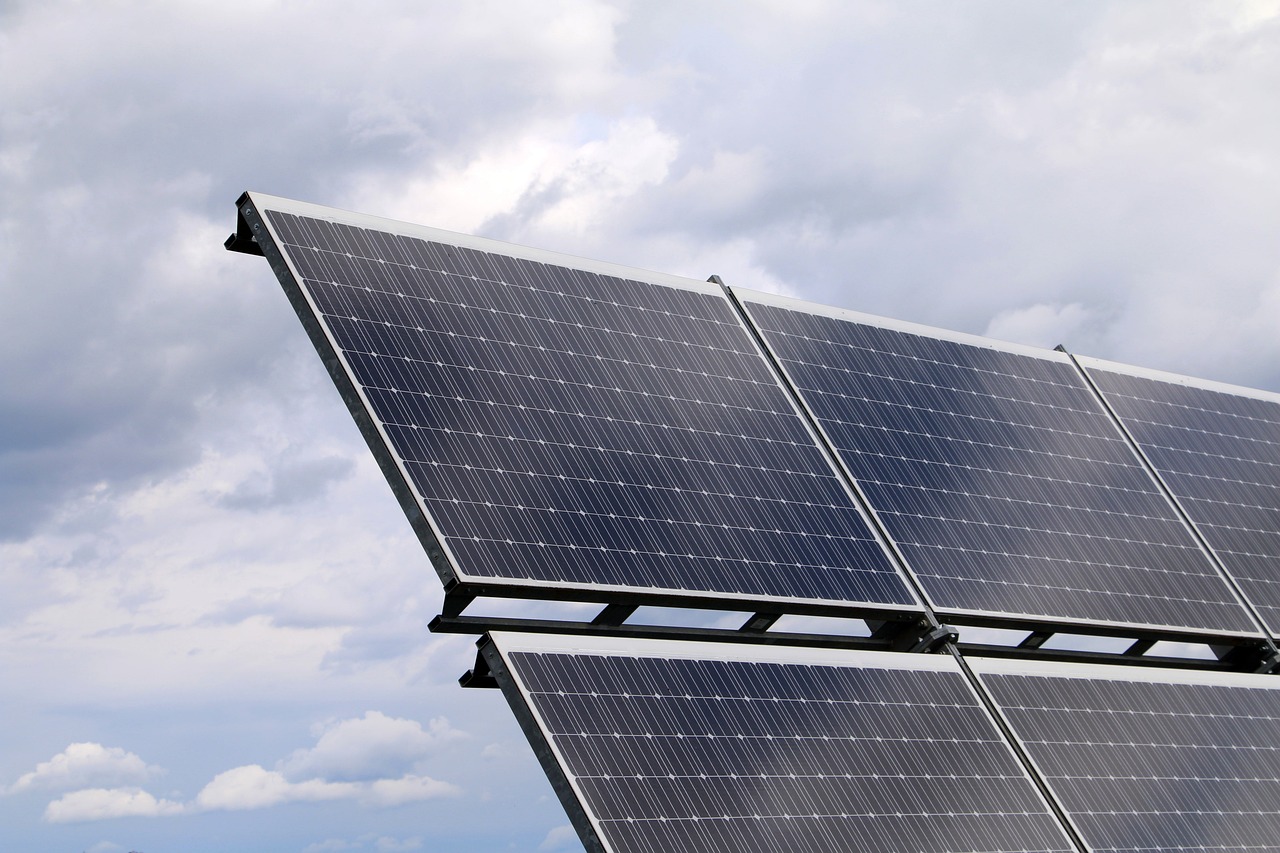
Challenges Facing Green Energy
While the promise of green energy solutions is exciting, it's important to acknowledge that they come with their own set of challenges. These hurdles can sometimes overshadow the benefits, leading to skepticism about the reliability of renewable energy sources. One of the most significant challenges is intermittency. Unlike traditional energy sources like coal or natural gas, renewable sources such as solar and wind are not always available. For instance, solar energy production drops significantly at night and during cloudy days, while wind energy is dependent on wind patterns. This variability can lead to gaps in energy supply, making it challenging to ensure a consistent energy flow.
Another major concern is the high initial costs associated with transitioning to green energy solutions. Although the long-term savings can be substantial, the upfront investment required for solar panels, wind turbines, and other renewable technologies can deter both consumers and businesses from making the switch. This initial financial barrier can be particularly daunting for smaller enterprises or low-income households, who may not have the capital to invest in renewable energy infrastructure.
Additionally, there are technological limitations that need to be addressed. While advancements in renewable energy technology have been remarkable, there are still many areas that require innovation and improvement. For example, the efficiency of solar panels and wind turbines can vary, and not all regions have equal access to these resources. To maximize the potential of green energy, ongoing research and development are crucial to overcome these limitations.
Moreover, the infrastructure needed to support green energy solutions is often lacking. Many grids were designed with traditional energy sources in mind, which means they may not be equipped to handle the influx of renewable energy. This can lead to grid instability and inefficiencies in energy distribution. To combat this, investments in smart grid technology and energy storage solutions are essential for creating a more resilient energy system.
In summary, while green energy solutions offer a pathway to a sustainable future, they are not without their challenges. Addressing issues such as intermittency, high initial costs, technological limitations, and infrastructure inadequacies will be key to enhancing the reliability and acceptance of these renewable sources. The road ahead may be bumpy, but with collective effort and innovation, the transition to a greener energy landscape is within reach.
- What is intermittency in renewable energy? Intermittency refers to the variability in energy production from renewable sources, such as solar and wind, which can lead to inconsistent energy supply.
- Why are initial costs a barrier to green energy? The upfront investment for renewable energy technologies can be high, making it difficult for some consumers and businesses to afford the transition.
- How can technology help overcome challenges in green energy? Advancements in energy storage and smart grid technology can enhance the reliability and efficiency of renewable energy systems, addressing issues like intermittency and grid instability.

Technological Innovations
The landscape of green energy is constantly evolving, driven by that enhance the reliability and efficiency of renewable energy sources. As we dive into this exciting realm, it's essential to recognize that technology is not just a tool; it’s a game-changer that can redefine how we harness energy from natural resources. From solar panels that capture sunlight more effectively to wind turbines that can generate power even in low-wind conditions, advancements are making green energy more accessible and dependable than ever before.
One of the most significant breakthroughs in the green energy sector is the development of energy storage technologies. Imagine a world where the power generated from the sun during the day can be stored and used at night. This is now a reality thanks to innovations in battery technology. Modern batteries, such as lithium-ion and flow batteries, are not only becoming more efficient but also more affordable. They allow energy produced from renewable sources to be stored and dispatched as needed, effectively bridging the gap between supply and demand. This capability is crucial for addressing the intermittency issues commonly associated with solar and wind energy.
Moreover, the rise of smart grid technology is revolutionizing how we manage and distribute electricity. Traditional power grids are often outdated and inefficient, leading to energy losses and reliability issues. However, smart grids utilize advanced communication and automation technologies to optimize electricity flow. This means that energy can be directed where it’s needed most, reducing waste and enhancing overall efficiency. With smart grids, consumers can also monitor their energy usage in real-time, making informed decisions about their energy consumption and contributing to a more sustainable energy ecosystem.
To illustrate the impact of these technological innovations, consider the following table that highlights some of the key advancements in energy storage and smart grid technologies:
| Technology | Benefits | Challenges |
|---|---|---|
| Lithium-ion Batteries | High energy density, long cycle life, decreasing costs | Resource scarcity, recycling issues |
| Flow Batteries | Scalability, long discharge times, eco-friendly | Lower energy density, higher upfront costs |
| Smart Grids | Improved reliability, reduced operational costs, real-time monitoring | High implementation costs, cybersecurity risks |
As we look to the future, the integration of these technologies will likely lead to even greater advancements. For instance, the combination of energy storage systems with smart grid technology could create a resilient energy network capable of handling disruptions and fluctuations in power supply. This synergy not only enhances reliability but also empowers consumers to take charge of their energy usage, promoting a culture of sustainability.
In conclusion, the technological innovations shaping the green energy sector are not just about improving efficiency; they’re about creating a robust and reliable energy future. As we continue to invest in and develop these technologies, we move closer to a world where renewable energy is not only a viable alternative but the primary source of power for our homes, businesses, and communities.
Q1: What are the most promising technologies in green energy?
A1: Some of the most promising technologies include energy storage solutions like lithium-ion and flow batteries, as well as smart grid technology that optimizes energy distribution.
Q2: How do energy storage systems improve the reliability of renewable energy?
A2: Energy storage systems allow excess energy generated during peak production times to be stored and used when production is low, thus ensuring a consistent energy supply.
Q3: What challenges do smart grids face?
A3: Smart grids face challenges such as high implementation costs and potential cybersecurity risks, but their benefits in energy management and efficiency are significant.
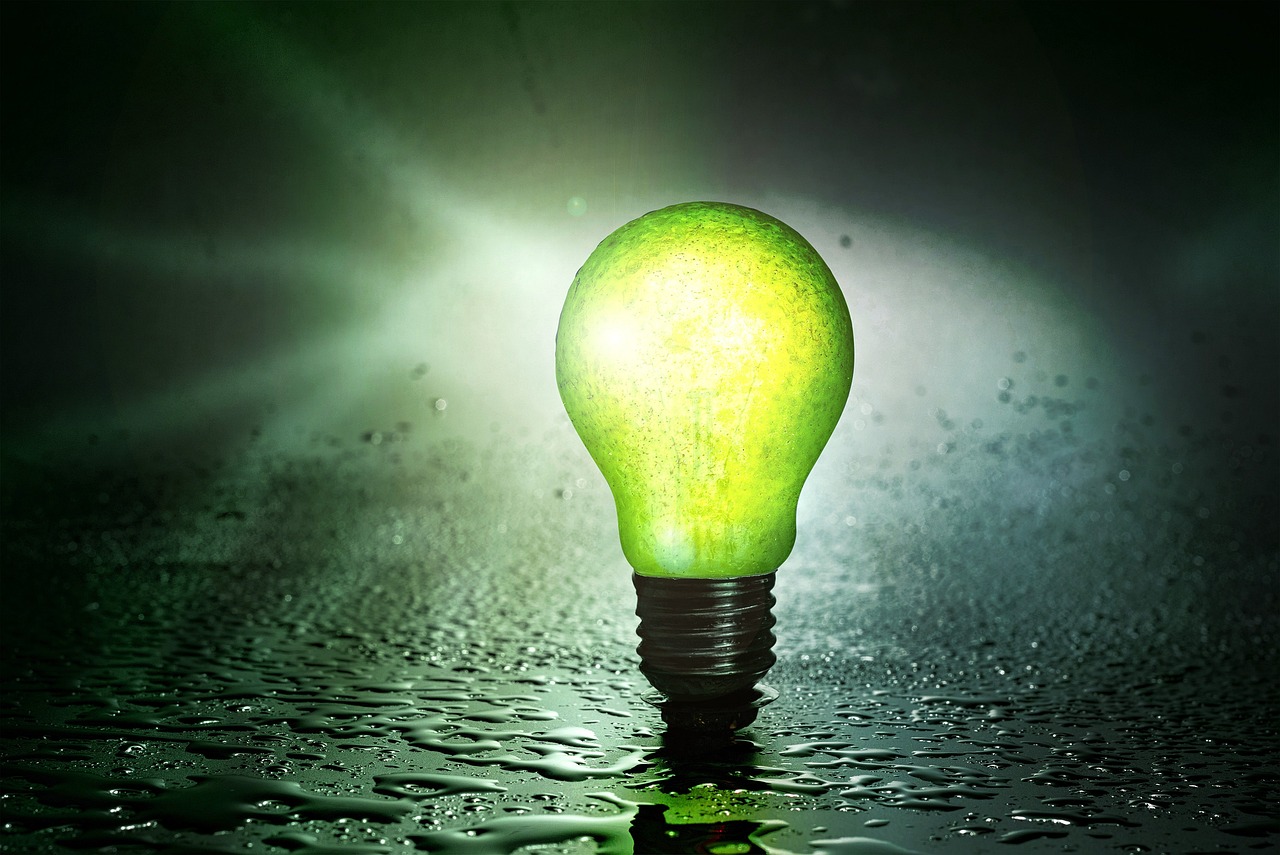
Energy Storage Solutions
When we talk about green energy, one of the biggest hurdles we face is the issue of supply and demand. Imagine a sunny day where solar panels are soaking up the sun's rays and generating electricity like there’s no tomorrow. But what happens when the sun sets or when the wind stops blowing? This is where come into play, acting like a safety net that ensures we have power even when renewable energy sources are not actively generating it.
Energy storage technologies, particularly batteries, are becoming increasingly essential in the quest for a reliable green energy future. These systems store excess energy produced during peak generation times and release it during periods of low production. It’s like having a savings account for electricity, where you can bank the surplus and draw on it when you need it most. The most common types of energy storage solutions include:
- Lithium-ion Batteries: These are the most widely used batteries today, powering everything from smartphones to electric vehicles. They offer high energy density and efficiency, making them ideal for storing renewable energy.
- Flow Batteries: These are great for large-scale storage solutions. They can be charged and discharged simultaneously, which allows for longer storage times and is perfect for balancing energy loads.
- Compressed Air Energy Storage (CAES): This innovative technology uses excess energy to compress air in underground caverns. When energy is needed, the compressed air is released to drive turbines and generate electricity.
Moreover, advancements in energy storage technologies are rapidly evolving, with research focusing on improving efficiency, reducing costs, and increasing the lifespan of storage systems. For instance, scientists are exploring solid-state batteries that promise higher energy densities and greater safety compared to traditional lithium-ion batteries. This could significantly enhance the reliability of green energy solutions, making them a more viable option for both residential and commercial use.
One of the most exciting developments in energy storage is the integration of artificial intelligence (AI) to optimize energy management. AI can analyze energy consumption patterns and predict when energy demand will peak, allowing storage systems to charge and discharge at the most effective times. This kind of intelligent energy management ensures that we are not just producing energy, but also using it in the most efficient way possible.
In summary, energy storage solutions are a crucial component in the reliability of green energy systems. By effectively managing the supply and demand of renewable energy, we can ensure that our transition to a sustainable energy future is not only feasible but also practical. As technology continues to advance, we can expect even more innovative solutions that will help us harness the full potential of green energy.
1. What are energy storage solutions?
Energy storage solutions are technologies that store excess energy generated from renewable sources, allowing it to be used later when production is low.
2. Why are energy storage solutions important for green energy?
They help balance supply and demand, ensuring a reliable energy supply even when renewable sources are not actively generating electricity.
3. What types of energy storage solutions are available?
Common types include lithium-ion batteries, flow batteries, and compressed air energy storage (CAES).
4. How is technology improving energy storage?
Advancements are being made in battery efficiency, lifespan, and the integration of AI for better energy management.

Smart Grid Technology
Smart grid technology represents a revolutionary shift in how we generate, distribute, and consume energy. Imagine a power grid that not only delivers electricity but also communicates with devices and systems to optimize energy use in real-time. This concept is not just a futuristic dream; it's becoming a reality and is essential for enhancing the reliability of green energy solutions. By integrating advanced communication and information technology, smart grids enable two-way communication between utilities and consumers, leading to a more efficient and responsive energy system.
One of the key advantages of smart grid technology is its ability to manage energy supply and demand dynamically. For instance, during periods of high electricity consumption, the grid can automatically adjust energy distribution, ensuring that everyone has access to the power they need. This flexibility is particularly beneficial for incorporating renewable energy sources, which can be unpredictable. By utilizing smart grid systems, we can effectively harness the power of solar and wind energy, even when the sun isn't shining or the wind isn't blowing.
Additionally, smart grids facilitate the integration of energy storage solutions, such as batteries, which are crucial for balancing the intermittent nature of renewable energy. With improved storage capabilities, excess energy generated during peak production times can be stored and released when demand is high. This not only enhances the reliability of green energy but also reduces the likelihood of blackouts and energy shortages.
Moreover, smart grid technology plays a vital role in promoting energy efficiency at the consumer level. It empowers individuals and businesses to monitor their energy usage in real-time, enabling them to make informed decisions about their consumption habits. For example, consumers can adjust their energy use based on pricing signals, shifting their electricity consumption to off-peak hours when rates are lower. This not only saves money but also helps to reduce the overall strain on the grid during peak demand times.
In conclusion, smart grid technology is a game-changer for the energy landscape. By enhancing the reliability and efficiency of green energy solutions, it paves the way for a more sustainable future. The ongoing advancements in smart grid systems promise to make renewable energy sources more accessible and dependable, ultimately contributing to a cleaner and greener planet.
- What is a smart grid? A smart grid is an advanced electrical grid that uses digital technology to monitor and manage the transport of electricity from all generation sources to meet the varying electricity demands of end users.
- How does smart grid technology improve energy efficiency? It allows for real-time monitoring and communication, enabling better energy management and helping consumers adjust their usage based on demand and pricing.
- Can smart grids support renewable energy sources? Yes, smart grids are designed to integrate renewable energy sources efficiently, managing their intermittent nature and ensuring a stable energy supply.
- What are the benefits of using smart grid technology? Benefits include improved reliability, enhanced energy efficiency, reduced operational costs, and better integration of renewable energy sources.
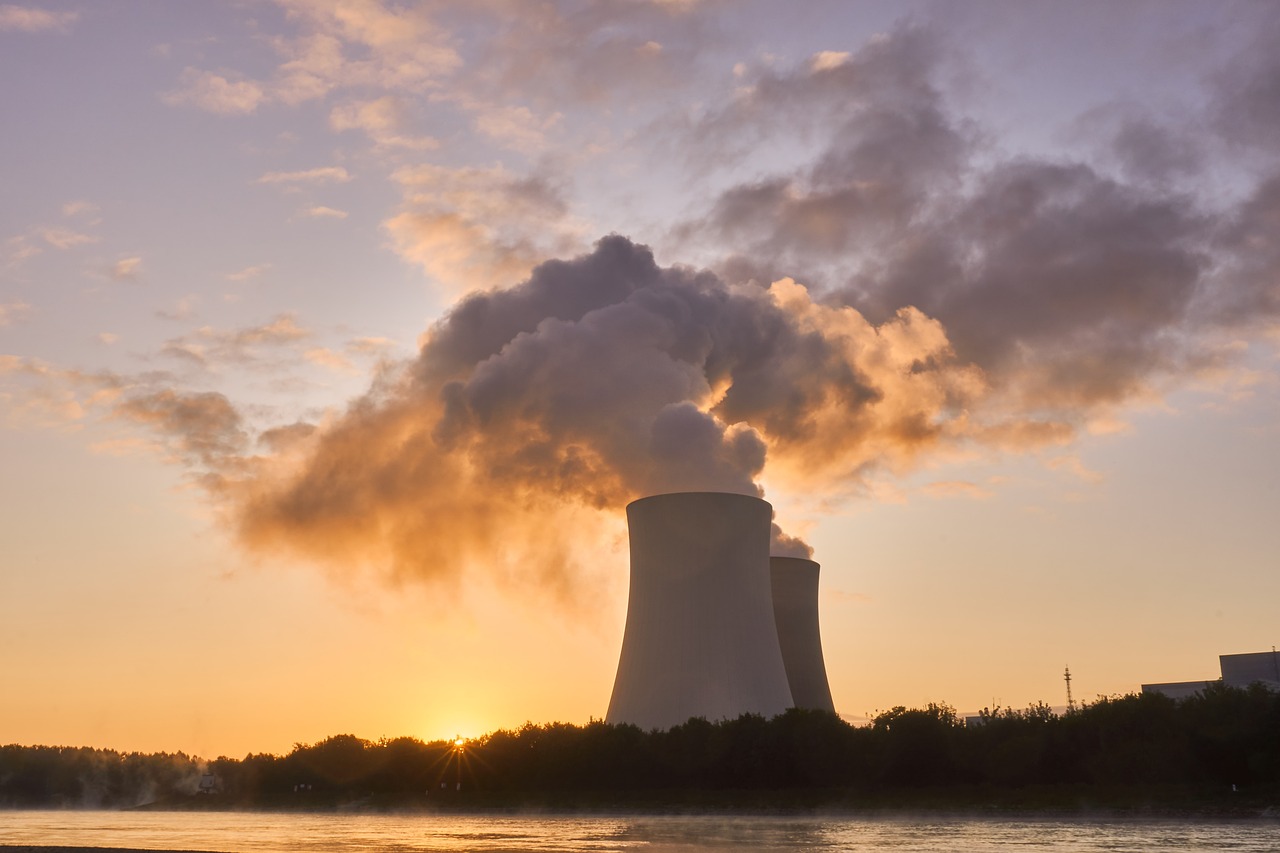
The Future of Green Energy
The future of green energy solutions looks incredibly promising, and it's not just wishful thinking—it's backed by a wave of global investments and shifting policies that favor sustainability. As we stand on the brink of a renewable revolution, it's essential to understand the trends and innovations that are shaping this future. Imagine a world where our energy needs are met without harming the planet—a world where solar panels adorn rooftops like sunflowers turning toward the sun, and wind turbines spin gracefully on the horizon. That's not just a dream; it's becoming a reality!
One of the most exciting aspects of this green energy future is the rapid advancement in technology. Innovations in solar cells, wind turbines, and energy storage systems are making renewable energy sources more efficient and accessible than ever. For instance, the development of perovskite solar cells has the potential to revolutionize the solar industry by significantly lowering production costs and increasing efficiency. Similarly, advancements in offshore wind technology are allowing us to harness stronger and more consistent winds, paving the way for larger, more effective wind farms.
Moreover, government policies around the globe are starting to align with the goals of sustainability. Many countries are setting ambitious targets for reducing carbon emissions, which translates into increased funding for renewable energy projects. This push is not just about environmental responsibility; it's also about economic opportunity. The transition to green energy is expected to create millions of jobs worldwide, from manufacturing to installation and maintenance. To illustrate this point, consider the following table showing projected job growth in the renewable sector:
| Sector | Projected Job Growth (2020-2030) |
|---|---|
| Solar Energy | 200,000+ |
| Wind Energy | 150,000+ |
| Energy Efficiency | 100,000+ |
| Battery Storage | 75,000+ |
In addition to technological advancements and job creation, public awareness and acceptance of green energy are on the rise. More and more people are recognizing the importance of sustainable practices, not just for the environment, but for their health and well-being. This cultural shift is crucial; as consumers demand greener options, businesses will be compelled to adapt. It’s like a domino effect—once one falls, the rest follow suit, leading to a more sustainable economy.
However, the journey to a fully realized green energy future is not without its challenges. Issues like energy storage, grid reliability, and initial investment costs still pose hurdles. Yet, with ongoing research and development, solutions are emerging. For example, innovations in smart grid technology are helping to optimize energy distribution, making it easier to integrate renewable sources into existing infrastructures. This means that as we move forward, the reliability of green energy will only continue to improve, making it a more viable option for everyday consumers and businesses alike.
As we look ahead, it’s clear that the future of green energy is not just a fleeting trend; it’s a fundamental shift in how we think about and use energy. With the right investments, policies, and technologies in place, we can create a sustainable energy landscape that benefits everyone. So, are you ready to embrace this green revolution? The time to act is now, and the future is bright!
- What are the main types of green energy? Green energy primarily includes solar, wind, hydroelectric, and geothermal power.
- How can I support green energy initiatives? You can support green energy by choosing renewable energy options for your home, advocating for sustainable policies, and reducing your overall energy consumption.
- Are green energy solutions expensive? While initial investment costs can be higher, green energy solutions often lead to long-term savings on energy bills and are becoming increasingly affordable due to technological advancements.
Frequently Asked Questions
- What is green energy?
Green energy refers to energy generated from renewable sources that have a minimal impact on the environment. This includes solar, wind, hydro, and geothermal energy. By utilizing these resources, we can significantly reduce our carbon footprint and combat climate change.
- How reliable are green energy solutions?
Green energy solutions are increasingly reliable due to advancements in technology. Innovations in energy storage and smart grid systems have enhanced the efficiency and stability of renewable energy sources, making them a dependable choice for the future.
- What are the benefits of using green energy?
The benefits of green energy are numerous! It helps reduce greenhouse gas emissions, lowers energy costs, and promotes energy independence. Additionally, investing in renewable energy can stimulate local economies and create job opportunities in various sectors.
- What challenges do green energy solutions face?
While green energy has many advantages, it also faces challenges such as intermittency (the variability of energy supply), high initial costs, and technological limitations. However, ongoing research and development are addressing these issues to improve the reliability and affordability of green energy.
- How does energy storage improve green energy reliability?
Energy storage solutions, like batteries, play a crucial role in managing energy supply and demand. By storing excess energy generated during peak production times, we can ensure a consistent energy supply, even when renewable sources are not actively producing energy.
- What is smart grid technology?
Smart grid technology enhances the distribution and management of energy. It allows for real-time communication between energy providers and consumers, optimizing energy use and improving the efficiency of renewable energy systems. This technology is vital for making green energy more reliable and accessible.
- What does the future hold for green energy?
The future of green energy looks bright! With increasing global investments and supportive policies, we can expect continued advancements in technology, making renewable energy solutions even more efficient and widespread. This shift towards sustainability is essential for a healthier planet.



















